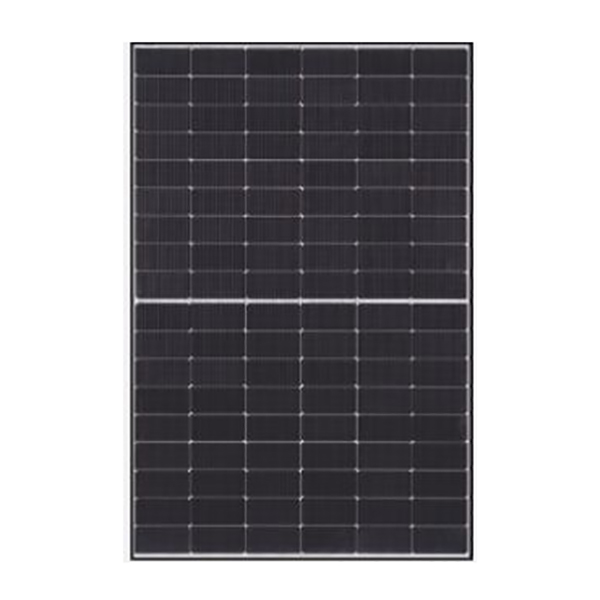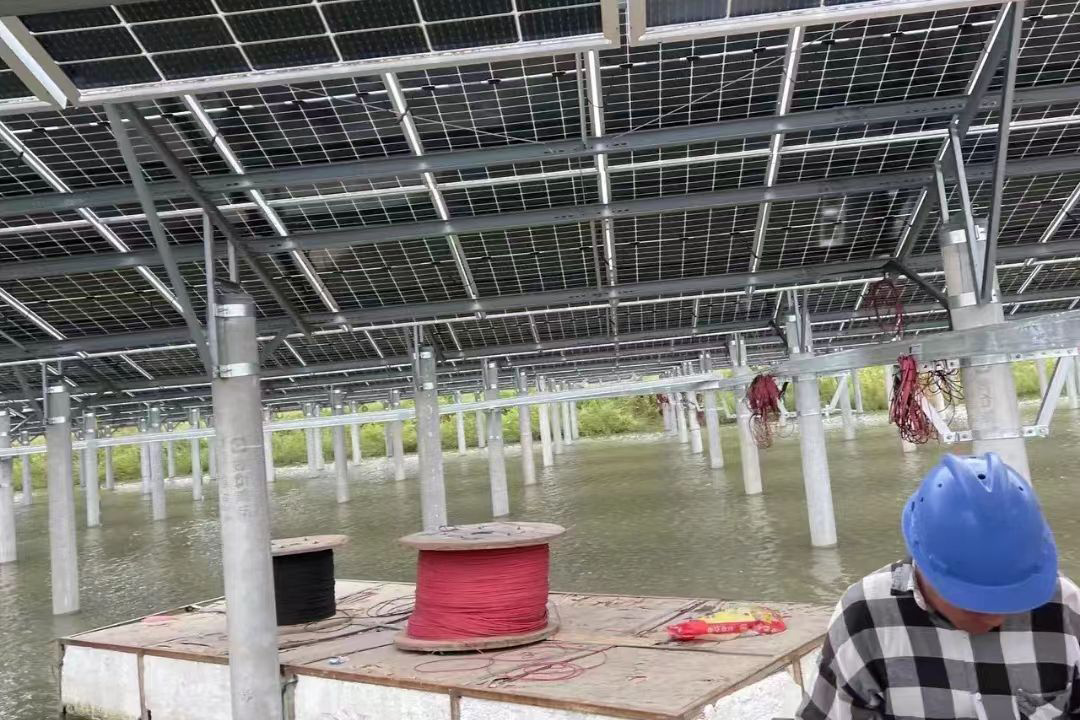Partner content: This content was created by a business partner of Dow Jones and researched and written independently of the MarketWatch newsroom. Links in this article may result in us earning a commission. Learn More
Leonardo David is an electromechanical engineer, MBA, energy consultant and technical writer. His energy-efficiency and solar consulting experience covers sectors including banking, textile manufacturing, plastics processing, pharmaceutics, education, food processing, real estate and retail. He has also been writing articles about energy and engineering topics since 2015. Solar Panels 550w

Tori Addison is an editor who has worked in the digital marketing industry for over five years. Her experience includes communications and marketing work in the nonprofit, governmental and academic sectors. A journalist by trade, she started her career covering politics and news in New York’s Hudson Valley. Her work included coverage of local and state budgets, federal financial regulations and health care legislation.
While photovoltaic (PV) cells need sunlight to generate electricity, they do not require heat. If you have a suitable area not covered by shadows, it can be worth installing solar panels even in places with cold temperatures. For example, New York and Massachusetts both receive plenty of snow during the year and are among the leading states for solar power.
While it is true that solar systems generate more energy in warmer locations, this is the result of more direct sunlight, not higher temperatures. Cloudy weather and snowfall may reduce solar panel productivity, but winter should not affect a system’s annual energy generation significantly. The best solar companies can ensure your system will generate enough power based on your location and local weather conditions.
Solar panels work using a basic principle: if sunlight can reach the surface of a panel’s PV cells, it will generate electricity even during cold weather. Heavy snowfall can interrupt solar generation temporarily, but this happens because a thick layer of snow blocks sunlight. As the snow melts away from the surface, solar panels will continue to generate power,
Solar panels are very durable in all climates, and leading brands offer 25-year product warranties to cover manufacturer or performance issues. Low temperature should not reduce the lifespan of your solar panels — solar cells can actually become more efficient because they are not overheating.
There are three main types of solar panels: monocrystalline, polycrystalline and thin-film. Monocrystalline panels have the highest sunlight conversion efficiency, polycrystalline panels have an intermediate efficiency and thin-film panels have the lowest. As a result, monocrystalline panels cost more than other options.
Regardless of their type, manufacturers design high-quality solar panels to operate under a temperature range of -40°F to +185°F. All three types of panels suffer an efficiency loss when they overheat, but this also means they get an efficiency boost in winter weather. Productivity drops slightly in the winter because less sunlight is available during the shorter days, but the percentage of sunlight being converted to electric power is actually higher.
If you live in a state that receives heavy snowfall, you may also want to consider the snow load a solar panel can handle. Most modules can withstand 60 to 120 pounds per square foot of pressure.
Generally, snow will fall off or melt away from the surface of solar panels by itself, and cleaning is rarely needed. Snow can help clean your solar panels, and a light dusting of snow is unlikely to stick to your panels for very long. Keep in mind that solar panels warm up when exposed to sunlight, causing the snow to melt faster. However, if you prefer to clean your panels after heavy snow instead of waiting for it to melt, make sure you use the right snow removal tools:
Technicians will typically install solar arrays used in cold climates with a tilt angle so snow will slide off instead of accumulating. Tilted solar panels also capture more sunlight in northern locations since the sun’s position in the sky is lower. Reputable solar installation companies can determine the ideal tilt angle for panels in any location based on local sunlight and snowfall rates.
Solar panels are less productive during cloudy conditions, which tends to happen more frequently in colder regions. However, having a few cloudy days per year does not have a major impact on a solar system’s energy output and your resulting electric bill savings. To compensate for lower productivity during overcast days, you can add an energy storage system to your solar panels. With a solar battery, you can store surplus electricity to use during nighttime or on cloudy days.
As you can see using the World Bank Global Solar Atlas, solar panels can achieve high productivity throughout the U.S., even in colder states farther north. For comparison, Germany is among the countries with the highest solar adoption rates, and local sunshine is much lower than in the U.S.
When checking the Global Solar Atlas, you will notice that solar panels have higher productivity in sunny states like California and Texas. However, this is the result of getting more sunshine throughout the year. High temperatures can reduce the efficiency of solar cells — overall energy production is higher due to the sheer amount of solar radiation, but the percentage of sunlight converted into electricity is lower.
Solar power systems have been installed successfully throughout the U.S., even in states that see high snowfall during the winter months. The following table summarizes the solar capacity in states with high annual snowfall, based on data from the Solar Energy Industries Association (SEIA).
*Snowfall data sourced from online research into weather data.
**SEIA state reporting is accurate as of September 2023.
To put the above numbers into perspective, consider that one megawatt (or 1,000 kW) of solar panel capacity can generate enough electricity to power around 170 homes. For example, New York’s 4,717 MW of solar capacity can cover the consumption of over 800,000 households, according to the latest data reported by the SEIA.
Based on responses to our March 2023 survey of 1,000 homeowners with solar, the average solar system costs $15,000 to $20,000. Costs will vary based on where you live but generally, weather conditions are not a major factor in solar pricing. For example, a system may cost closer to $16,920 in Colorado versus $19,860 in Florida.
The following factors will determine your exact solar system cost:
However, where you live does determine available solar incentives. While all U.S. residents can claim the federal solar tax credit, some states may offer additional incentives like property tax exemptions and solar rebates.
We recommend requesting quotes from solar installers in your area to learn more. You can also use our solar calculator to estimate local pricing.
Solar panels can offer an attractive return on investment and utility bill savings, even in northern states that see snowfall. For example, both New York and Massachusetts get more than 50 inches of snow per year and have both surpassed 4,000 MW of installed solar capacity. Combined, these two states have enough PV capacity to power more than 1.4 million homes.
While it is true that higher rates of sunshine increase the annual solar power generation, other factors play a role in deciding if solar is worth it. New York and Massachusetts receive modest sunshine and plenty of snow, but both states offer generous incentive programs for homeowners who go solar. Solar incentives can help lower the overall cost of going solar, helping to shorten your panel payback period. Both states also have above-average electricity prices, which increases the value of each kilowatt-hour of energy produced by solar panels.
Ultimately, it is up to you if solar is worth the investment. But you can still see energy bill savings if you live in a state that sees moderate to heavy snowfall.
High-quality solar panels are very tough and durable. Leading manufacturers like SunPower and Silfab design photovoltaic modules to handle a snow load of over 5,400 pascals or around 550 kilograms of snow per square meter.
To reach this load, your solar panels would need to be buried under several feet of snow, which is unlikely to happen under normal conditions. Generally, snow buildup will only reach a few inches before it slides off or melts away. In many cases, solar panels are likely exposed to a small fraction of their maximum snow load in real-world applications. The top solar brands also offer product warranties of around 25 years to help protect your investment.
High-quality solar modules are built to withstand cold temperatures and conditions. While solar panels can technically freeze, they also generate enough heat to naturally melt ice and snow accumulations. Snow and ice should melt away from your panels without the need for cleaning. Also, solar companies operating in cold regions can install your panels at a higher tilt angle so snow falls off before it can accumulate and freeze over.
If you decide to clean the snow accumulated on your solar panels, it is very important to use proper tools. It is best to use non-abrasive tools such as a soft roof rake or a squeegee, while avoiding hard brushes and chemical cleaning agents.
Snow on solar panels can briefly reduce electricity output since it blocks sunlight from reaching their surface. However, snow has a minimal impact on solar panel productivity throughout the year. Low temperatures can improve the energy conversion efficiency of solar panels compared to hotter temperatures. Solar panels tend to receive less sunshine during the day in cold climates but can convert a higher percentage of sunshine into electricity due to less heat-related drops in efficiency.
Leonardo David is an electromechanical engineer, MBA, energy consultant and technical writer. His energy-efficiency and solar consulting experience covers sectors including banking, textile manufacturing, plastics processing, pharmaceutics, education, food processing, real estate and retail. He has also been writing articles about energy and engineering topics since 2015.
Tori Addison is an editor who has worked in the digital marketing industry for over five years. Her experience includes communications and marketing work in the nonprofit, governmental and academic sectors. A journalist by trade, she started her career covering politics and news in New York’s Hudson Valley. Her work included coverage of local and state budgets, federal financial regulations and health care legislation.
Copyright © 2023 MarketWatch, Inc. All rights reserved.

Solar Plate By using this site you agree to the Subscriber Agreement & Terms of Use, Privacy Notice, and Cookie Notice.
